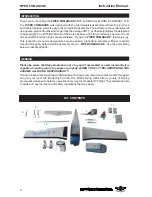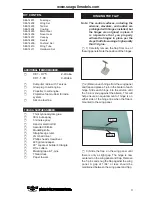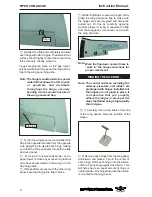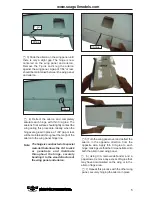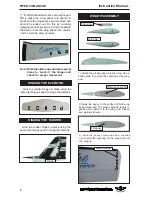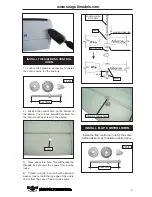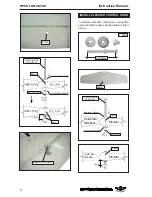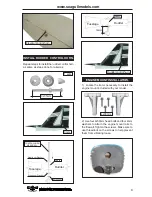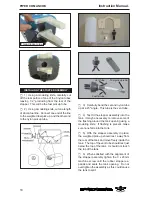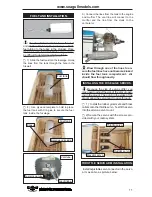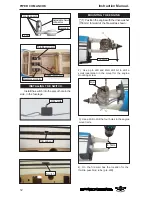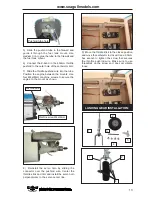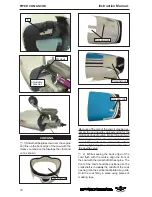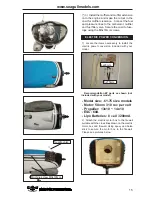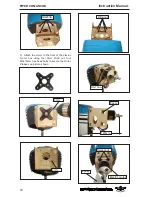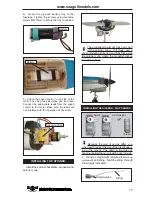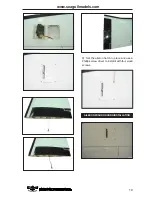
PIPER COMANCHE
.
Instruction Manual.
4
The control surfaces, including the
ailerons, elevators, and rudder, are
prehinged with hinges installed, but
the hinges are not glued in place. It
is imperative that you properly
adhere the hinges in place per the
steps that follow using a high-quality
thin C/A glue.
2) Remove each hinge from the wing panel
and aileron and place a T-pin in the center of
each hinge. Slide each hinge into the aileron
until the T-pin is snug against the aileron. This
will help ensure an equal amount of hinge is
on either side of the hinge line when the aileron
is mounted to the wing panel.
Note:
1) Carefully remove the aileron from one
of the wing panels. Note the position of the
hinges.
HINGING THE AILERON .
Hinge.
C/A glue.
4)Deflect the flap and completely saturate
each hinge with thin C/A glue. The ailerons front
surface should lightly contact the wing during
this procedure. Ideally, when the
The hinge is constructed of a special
material that allows the C/A to wick
or penetrate and distribute
throughout the hinge, securely
bonding it to the wood structure of
the wing panel and flap.
hinges are glued in place, a 1/64” gap or less
will be maintained throughout the lengh of the
flap to the wing panel hinge line.
Note:
7) Repeat this process with the other wing
panel, securely hinging the flap in place.
6) Using C/A remover/debonder and a
paper towel, remove any excess C/A glue that
may have accumulated on the wing or in the
flap hinge area.
5) Turn the wing panel over and deflect the
flap in the opposite direction from the opposite
side. Apply thin C/A glue to each hinge, making
sure that the C/A penetrates into both the flap
and wing panel.
8) After both flap are securely hinged, firmly
grasp the wing panel and flap to make sure
the hinges are securely glued and cannot be
pulled out. Do this by carefully applying
medium pressure, trying to separate the flap
from the wing panel. Use caution not to crush
the wing structure.
Work the flap down several times to
“work in” the hinges and check for
proper movement.
Note:


